#Gottfried Semper
Text

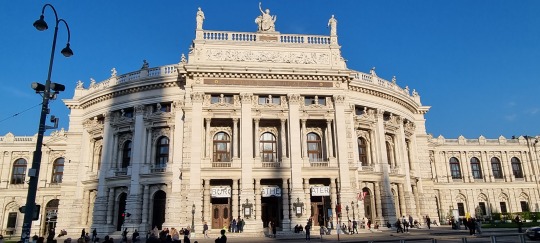
The façade of the new building of the Vienna (Imperial) Court Theater from 1888. It was designed by Gottfried Semper (ground plan) and Karl Freiherr von Hasenauer (façade).
Die Fassade des Neubaus des Wiener (k. k. Hof-) Burgtheaters von 1888. Der Entwurf stammt von Gottfried Semper (Grundriss) und Karl Freiherr von Hasenauer (Fassade).
Фасад нового здания Венского (Императорского) придворного театра (Бургтеатра) 1888 года. Спроектировано Готфридом Земпером (план здания) и Карлом Фрайхерром фон Хазенауэром (фасад).
La façade du nouveau bâtiment du théâtre impérial de Vienne, datant de 1888. Il a été conçu par Gottfried Semper (plan) et Karl Freiherr von Hasenauer (façade).
#Imperial Court Theater#Burgtheater#Vienna#Austria#Бургтеатр#façade#Gottfried Semper#Karl Freiherr von Hasenauer#Fassade#Hofburgtheater#1888#Готфрид Земпер#Карл Фрайхерр фон Хазенауэр#Императорский придворный театр#théâtre impérial#фасад#Wien#Österreich#Вена#Австрия#Vienne#Autriche#Innere Stadt#Vídeň#Wiedeń#Bécs#Viedeň#Rakousko#1. Bezirk#1010 Wien
1 note
·
View note
Text
DAS ERZGEBIRGE FEST - DIGITAL
.
DAS ERZGEBIRGE FEST - DIGITAL
Staatskapelle Dresden in der Sächsischen Schweiz -
youtube
Nº2
Carolin Masur & Sächsische Staatsoper Dresden -
Stille Nacht, Heilige Na…
https://www.youtube.com/watch?v=wMtdPIFmL2o%C2%A0v%C3%ADa+YOUTUBE&feature=youtu.be
Nº3
Dresdner Kreuzchor - Weihnachtsoratorium (Johann Sebastian Bach) https://youtu.be/cWKJFogshwg vía @YouTube
Nº4
Der sächsische Bildhauer Johannes Schilling (* 23. Juni 1828 in Mittweida; † 21. März 1910 in Klotzsche bei Dresden) war ein deutscher Bildhauer.
https://de.wikipedia.org/wiki/Johannes_Schilling
Bildwerke
1861–1868:
Vier Tageszeiten von Johannes Schilling Brühlsche Terrasse, Theaterplatz…
https://www.youtube.com/watch?v=19LDRavq3cg%C2%A0v%C3%ADa+%40YouTube&feature=youtu.be
1891/92:
Semper-Denkmal auf der Brühlschen Terrasse in Dresden
https://de.wikipedia.org/wiki/Gottfried-Semper-Denkmal
Nº5
Matthias Grünewald (16. Jahrhundert)
https://de.wikipedia.org/wiki/Matthias_Gr%C3%BCnewald
Nº6
Der Sächsische Kunstverein
https://de.wikipedia.org/wiki/S%C3%A4chsischer_Kunstverein
Nº7
1-A)
DIE MUSIK: NIEDERSACHSEN
Johann Joachim Quantz : DIE BIOGRAPHIE
(* 30. Januar 1697 in Scheden (Kurfürstentum Braunschweig-Lüneburg)
https://de.wikipedia.org/wiki/Johann_Joachim_Quantz
Johann Joachim Quantz
Tempo di Gavotta (Sonata 1 D-Major for flute+organ - Thomas Beie)
https://youtu.be/t1jUk_rIYCA vía @YouTube
“Gran Minuetto con Variazioni”
https://youtu.be/QDd-76cOGEI vía @YouTube
1- Grave - Sonata XIV en sol menor
https://youtu.be/RbaOCR1ewsI vía @YouTube
Flute Concertos
https://youtu.be/XubfFd0nkoI vía @YouTube
Ludwig Spohr: DIE BIOGRAPHIE
https://de.wikipedia.org/wiki/Louis_Spohr
Ludwig Spohr
Messe in c-moll, op. 54
https://youtu.be/yuYfDWcBHbE vía @YouTube
Duo for Violin and Viola in E minor
https://youtu.be/wXsKmUd0H8U vía @YouTube
Sonata para violín y arpa en do menor. II. Andante-Allegro
https://youtu.be/VXM8d_FFhfM vía @YouTube
Symphony Nº9,Op.143(1850)“The Seasons”
https://youtu.be/LFUIR3h-fcg vía @YouTube
“The Last Judgement” - Heilig ist Gott der Herr /…
https://youtu.be/9IsUNiOJ0UU vía @YouTube
1-B)
DIE MUSIK: SACHSEN
Johann Gottlieb Naumann: DIE BIOGRAPHIE
(* 17. April 1741 in Blasewitz; † 23. Oktober 1801 in Dresden)
https://de.wikipedia.org/wiki/Johann_Gottlieb_Naumann
Johann Gottlieb Naumann
Sinfonia I. D-Dur
https://youtu.be/no_i5JDOtWQ vía @YouTube
Kommt herzu (Kantate)
https://youtu.be/HcyGy4922fI vía @YouTube
Psalm - Singet dem Herrn ein neues Lied
https://youtu.be/b9RZiM484IU vía @YouTube
Te Deum
https://youtu.be/JjR19SBaDOs vía @YouTube
Missa No.18 in D-minor (1794)
https://youtu.be/qPmrq7P98cs vía @YouTube
DIE BIOGRAPHIE: Heinrich August Marschner
https://de.wikipedia.org/wiki/Heinrich_Marschner
Heinrich August Marschner
»Der Morgentau« (Op. 87 Nr. 2)
https://youtu.be/MID5ft4EUyo vía @YouTube
Johann Paul von Westhoff: DIE BIOGRAPHIE
(* 1656 in Dresden; begraben 17. April 1705 in Weimar)
http://www.radioswissjazz.ch/de/musikdatenbank/musiker/254974fa2b577a3dbe733ba3b930a3b1c89289/biography
Allemande & Courante from the A major suite for solo violin
https://youtu.be/2YtNbH3hn1A vía @YouTube
Suites for Solo Violin (Kolja Lessing)
https://youtu.be/34iZsGgufmg vía @YouTube
6 Sonates for Violin et Basso Continuo
https://youtu.be/DOIRJoHnZYQ vía @YouTube
1-C)
DIE MUSIK: SACHSEN - ANHALT
Johann Gottfried Reiche: DIE BIOGRAPHIE
(* 5. Februar 1667 in Weißenfels; † 6. Oktober 1734 in Leipzig)
https://de.wikipedia.org/wiki/Gottfried_Reiche
Johann Gottfried Reiche
Abblasen
https://youtu.be/483AdTgZP14 vía @YouTube
Fuga - Posaunenchor Hochstadt
https://youtu.be/nGzpXeXcrwg vía @YouTube
1. Sonatina aus “Turmsonaten”
https://youtu.be/vT6bJ_o0C2A vía @YouTube
Georg Philipp Telemann: DIE BIOGRAPHIE
(14. März 1681 - 25. Juni 1767)
http://www.klassikakzente.de/georg-philipp-telemann/biografie
20 little Fugues for Organ TWV 30:1-20, Franz Loerch Organ
https://youtu.be/W8PzwLUyKe4 vía @YouTube
Concert for trumpet and organ in D
https://youtu.be/WQiRPvGy5Yo vía @YouTube
DIE TAGESZEITEN
https://youtu.be/WZWEN_7B63s vía @YouTube
Matthaus Passion
https://youtu.be/ZPkh7vyUht8 vía @YouTube
1-D)
DIE MUSIK: THÜRINGEN
Heinrich Schütz: DIE BIOGRAPHIE
https://de.wikipedia.org/wiki/Heinrich_Sch%C3%BCtz
Heinrich Schütz
Symphoniae Sacrae I
https://youtu.be/KJlpATkd5B0 vía @YouTube
Symphoniae Sacrae II
https://youtu.be/u-qYLruhPXM vía @YouTube
Johann Sebastian Bach: DIE BIOGRAPHIE
http://www.klassika.info/Komponisten/Bach/lebenslauf_1.html
Magnificat in D major, BWV 243 - Harnoncourt
https://youtu.be/Vr5cKdC3v3E vía @YouTube
J.S.Bach-Toccata e Fuga BWV 565-Karl Richter
https://youtu.be/Zd_oIFy1mxM vía @YouTube
Hallelujah
https://youtu.be/0S6Tjvaj19Q vía @YouTube
2)
Die Ornithologie
Johann Friedrich Naumann (SACHSEN -ANHALT)
https://de.wikipedia.org/wiki/Johann_Friedrich_Naumann
Johann Andreas Naumann (SACHSEN -ANHALT)
(* 13. April 1744 in Ziebigk bei Köthen; † 15. Mai 1826 ebenda)
https://de.wikipedia.org/wiki/Johann_Andreas_Naumann
Der König von Sachsen Vogel-Paradies (Pteridophora Alberti)
King-of-Saxony Bird-of-Paradise (Pteridophora Alberti)
(Adolf Bernhard Meyer (11 October 1840,
Hamburg – 22 August 1911, Dresden))
https://youtu.be/MdNyeasi0GI vía @YouTube
2-A
Semper, Gottfried
http://www.deutsche-biographie.de/sfz80027.html
Nº8
Stollen (Gebäck)
https://de.wikipedia.org/wiki/Stollen_(Gebäck)
Nº9
Weihnachten in Dresden – Typisch sächsische Traditionen
https://storify.com/reisen_online/weihnachten-in-dresden-typisch-sachsische-traditio…
Nº10
Traditionelles HandwerkfHandwerk

2 notes
·
View notes
Text
A palace full of art in Dresden

The Zwinger in Dresden, the historic capital of Saxony, is a Baroque palace complex built on the site of a former fortress by August the Strong, King of Poland, Grand Duke of Lithuania and Elector of Saxony (Friedrich August I der Starke in German, August II Mocny in Polish).
Built between 1711 and 1728, the Zwinger has several characteristic elements, such as the Crown Gate (Kronentor, in German), presided over by a representation of the Polish royal crown, the Nymphs' Fountain (Nynphenbad), the armoury, the so-called Hall of Mathematics and Physics, and the spaces housing various collections.
In terms of museums, the Zwinger includes a zoological museum, a porcelain collection and the Old Masters' Picture Gallery, which houses more than 700 paintings from the Renaissance to the Baroque period and was established by Frederick Augustus himself and his son August III, who enlarged it by purchasing around one hundred works from Duke Francesco III of Modena.
August III was responsible for the purchase of Raffaello’s Madonna Sixtina, a work whose angels at the bottom of the painting have been reproduced countless times as decorative elements.
This work also came into the limelight in 2022 when a campaign by the environmental activist organisation Last Generation (Letzte Generation, in German) led two of its members to attach themselves to the frame of the painting as an act of protest. The restoration value of the damage to the painting was estimated by the State Art Collections Dresden (SKD) at between 3,000 and 5,000 euros.
However, the Zwinger buildings intended to house the Picture Gallery were completed in the 19th century by the architect Gottfried Semper, who designed the nearby opera house which bears his own name, Semperoper, although its official name is the Saxon State Opera of Dresden.
2 notes
·
View notes
Text
Naturhistorisches Museum

Naturhistorisches Museum
Faszinierende Reise durch die Geschichte: Das Naturhistorische Museum in WienDas Naturhistorische Museum in Wien ist eine Schatzkammer der Naturgeschichte, die Besucher aus aller Welt in ihren Bann zieht. Mit einer reichen Sammlung von Artefakten, Fossilien und Exponaten bietet das Museum eine faszinierende Reise durch die evolutionäre Geschichte unseres Planeten. In diesem Blogbeitrag werden wir die Schätze dieses beeindruckenden Museums erkunden und die Gründe beleuchten, warum es nicht nur für Naturwissenschafts-Enthusiasten, sondern für jeden Besucher ein absolutes Muss ist.Geschichte und Architektur: Das Naturhistorische Museum wurde im 19. Jahrhundert gegründet und beeindruckt nicht nur durch seine faszinierenden Ausstellungen, sondern auch durch seine beeindruckende Architektur. Das Gebäude, das von Gottfried Semper entworfen wurde, strahlt eine zeitlose Eleganz aus und ist ein perfektes Beispiel für die Pracht der Renaissance-Architektur. Der majestätische Kuppelsaal im Zentrum des Museums ist allein schon einen Besuch wert und bietet einen atemberaubenden Blickfang.Die Sammlungen: Das Herzstück des Museums sind zweifellos seine Sammlungen. Hier findet man eine beeindruckende Vielfalt von Exponaten, angefangen bei Dinosaurier-Skeletten bis hin zu prächtigen Mineralien und Edelsteinen. Ein besonderes Highlight ist das 29.500 Jahre alte Mammut, das perfekt konserviert wurde und einen faszinierenden Einblick in die eiszeitliche Geschichte bietet. Die liebevolle Präsentation der Exponate ermöglicht es den Besuchern, die Entwicklung der Erde und ihrer Bewohner hautnah nachzuvollziehen.Interaktive Ausstellungen: Das Naturhistorische Museum in Wien hebt sich auch durch seine interaktiven Ausstellungen von anderen Museen ab. Besucher haben die Möglichkeit, in die Welt der Paläontologie einzutauchen, indem sie fossilisierte Abdrücke selbst erkunden. Die interaktiven Displays bieten eine unterhaltsame und lehrreiche Erfahrung für Menschen jeden Alters, und Kinder können besonders viel Spaß dabei haben, mehr über die Wunder der Natur zu erfahren.Bildung und Forschung:Das Museum ist nicht nur ein Ort der Wissensvermittlung, sondern auch ein wichtiger Forschungsort. Forscher und Wissenschaftler arbeiten aktiv daran, neue Entdeckungen zu machen und das Verständnis für die Natur weiter zu vertiefen. Besucher können oft an Vorträgen und Workshops teilnehmen, die von führenden Experten auf dem Gebiet der Naturgeschichte geleitet werden.Besuchertipps: Für einen optimalen Besuch im Naturhistorischen Museum in Wien empfiehlt es sich, genügend Zeit einzuplanen. Die Fülle an Informationen und Exponaten kann überwältigend sein, daher lohnt es sich, im Voraus einen Rundgang zu planen. Zudem bietet das Museum regelmäßig Sonderausstellungen, die einen zusätzlichen Anreiz für einen erneuten Besuch bieten.Fazit: Das Naturhistorische Museum in Wien ist nicht nur ein Museum, sondern ein faszinierendes Fenster zur Geschichte unserer Erde. Die beeindruckenden Sammlungen, die interaktiven Ausstellungen und die bedeutende Rolle des Museums in der Forschung machen es zu einem unverzichtbaren Ziel für Natur- und Geschichtsliebhaber. Ein Besuch verspricht nicht nur Wissen, sondern auch eine Reise durch die Zeitalter der Naturgeschichte.
Öffnungszeiten
Täglich
Read the full article
#familienfreundlich#Museen#Museum#Natur#NaturhistorischesMuseum#Regen#Schlechtwetter#Schönwetter#Sonne#Tiere#Wien
0 notes
Text
Festival di Bayreuth 2023
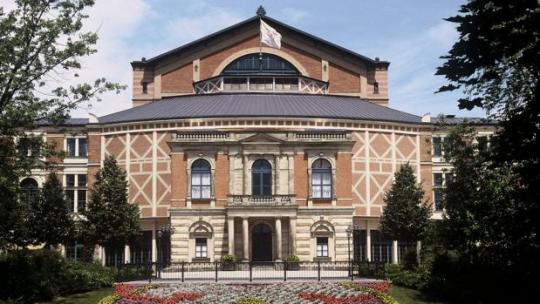
Dal 25 luglio al 28 agosto torna in Germania il Festival di Bayreuth, che attrae ogni anno un pubblico internazionale di appassionati di musica da tutto il mondo per assistere alle rappresentazioni di Wagner in uno dei teatri più prestigiosi del mondo.
Si tratta di un'esperienza di culto per gli appassionati, che si immergono completamente nella musica e nell'atmosfera magica del festival.
Ritrovo annuale di tutti gli appassionati di Richard Wagner, il Festival di Bayreuth iniziò la sua storia nel 1850 quando il celebre compositore ebbe l'idea di creare una rassegna musicale dedicata alle sue opere e aperta al maggior numero di persone, pensando ad un festival a prezzi popolari se non gratuito.
L'amicizia con Ludwig II di Baviera, suo devoto ammiratore e mecenate, gli permise di realizzare il suo sogno, infatti il sovrano, oltre ad assicurargli una sicurezza economica e regalargli una villa prima a Monaco e poi a Bayreuth, gli finanziò la costruzione di un teatro, noto come il Festspielhaus.
Basato su un precedente progetto di Gottfried Semper per un teatro a Monaco, mai realizzato per le opposizioni dei ministri del regno, il teatro di Bayreuth fu costruito tenendo conto dei suggerimenti di Wagner, infatti l'orchestra viene nascosta sotto il palco in modo che il pubblico non venga distolto dal seguire l'opera, sono eliminati i palchi per non creare distinzioni di ceto sociale ed economico e inseriti alcuni accorgimenti tecnici e strutturali per rendere l'acustica perfetta.
La prima edizione del festival si svolse dal 13 al 30 agosto 1876 con la rappresentazione, per la prima volta, del ciclo delle quattro opere che compongono L'anello del Nibelungo, L'oro del Reno, La Valchiria, Sigfrido e Il crepuscolo degli dei
Il successo fu immediato, dato che non solo nel regno di Baviera ma in tutti i salotti della Germania non si parlava che del Festival di Bayreuth.
Alla morte del compositore, avvenuta a Venezia nel 1883, la direzione passò alla moglie Cosima (1886-1906) e al figlio Siegfried (1908-1930).
Alla morte di Siegfried, subentrò la moglie Winifred, che lo diresse fino al 1944.
Il festival riprese nel 1951 sotto la doppia direzione di Wieland e Wolfgang Wagner, figli di Winifred e nipoti di Richard, e la lunga pausa fu dovuta non per la ricostruzione post-bellica ma anche alle polemiche sorte dall'amicizia che legava Winifred a Hitler, che visitò spesso il festival. Alla prematura morte di Wieland nel 1966, unico direttore rimase, e lo fu fino al 2008, il fratello Wolfgang.
Tra le personalità presenti al festival ci furono re Ludwig II, gli imperatori Guglielmo I di Germania e Pietro II del Brasile, Pyotr Ilyich Tchaikovsky e, negli anni più recenti, Angela Merkel e numerosi esponenti della vita politica e del jet set tedesco.
Arturo Toscanini fu il primo direttore non tedesco del festival nel 1930-31, ma non fece più ritorno a Bayreuth dopo l'avvento del nazismo.
Read the full article
0 notes
Text
Dresdner Zwinger

El Zwinger de Dresden, la capital històrica de Saxònia, és un conjunt palatí barroc construït al lloc on antigament s'ubicava una fortalesa per August el Fort, rei de Polònia, gran duc de Lituània i príncep elector de Saxònia (Friedrich August I der Starke, en alemany, August II Mocny, en polonès).
Construït entre 1711 i 1728, el Zwinger compta amb diversos elements característics, com la porta de la corona (Kronentor, en alemany), presidida per una representació de la corona reial polonesa, la font de les nimfes (Nynphenbad), l'armeria, el anomenat Saló de les Matemàtiques i la Física i els espais que acullen diverses col·leccions.
A la seva faceta museística, el Zwinger engloba un museu de Zoologia, una col·lecció de porcellanes i l'anomenada Pinacoteca dels antics mestres, que acull més de 700 obres pictòriques des del Renaixement al Barroc i va ser instituïda pel mateix Frederic August i el seu fill August III, que li va donar més dimensions en comprar un centenar d'obres al duc Francesco III de Mòdena.
August III va ser el responsable de la compra de la Madonna Sixtina de Rafael, una obra que va ser popularitzada pels angelets que hi surten, situats a la part inferior del quadre, per haver estat reproduïts infinites vegades com a elements decoratius.
Aquesta obra també va saltar a la palestra el 2022 quan una campanya de l'organització d'activistes mediambientals Darrera Generació (Letzte Generation, en alemany) va portar dos dels seus membres a enganxar-se al marc del quadre com a acte de protesta. El valor de la restauració dels danys causats en ell van ser avaluats per les Col·leccions Estatals d'Art de Dresden (SKD) en una quantitat d'entre 3.000 i 5.000 euros.
Tot i això, les edificacions del Zwinger destinades a acollir la Pinacoteca van ser concloses al segle XIX per l'arquitecte Gottfried Semper, creador del no gaire llunyà edifici de l'òpera que recorda el seu propi nom, Semperoper, encara que la seva denominació oficial sigui el d'Òpera Estatal Saxona de Dresden.
1 note
·
View note
Text

Das römische Theater
1.
Das römische Theater liegt am Fuß des Kösterbergs, am Ufer der Elbe. Heute ist das Theater öffentlich, aber es wurde von den Warburgs privat angelegt, der Vater von Gottfried Semper hat den Garten nach englischen Mustern gestaltet. Der Park ist auch heute eindrucksvoll, schon darum, weil er an manchen Stellen wie die Kuppel des Kösterbergs wirkt. Man schaut wie aus den Bergen auf die Elbe. Das römische Theater ist ein sog. Naturtheater, vielleicht hat Semper der Ältere auch das gestaltet, aber es ist Teil des römischen Gartens, das könnte auch ein anderer als Papa Semper gestaltet haben. Die Gebäude sind nicht so monumental wie in Newport Rhode Island, aber das ist schon alles sehr herrschaftlich.
In dem römischen Theater wurden u.a. Aby Warburgs Theatherstücke aufgeführt. Das Stück Künstlergespräche wurde hier aufgeführt. Das ist interessant, auch weil die Figuren, zum Beispiel Eva, stellenweise dann nichts sagen. Das ist natürlich bei allen Stücken so, nicht alle reden das ganze Stück gleichzeitig, das könnte eher doof sein. Trotzdem ist bei Aby was besonders, wie soll es anders sein. Der Unterschied liegt in den Anweisungen, die er in den Zeilen gibt, in denen die Figuren im übrigen stumm sind. Im Drama wird den stummen Figuren dann doch eine Zeile gewidmet, wie etwa die berühmten Zeilen und Regieanweisungen (Auftritt von links) oder (Auftritt von rechts) oder das immer wieder benutzte (geht ab), wenn der Autor Regieanweisungen gibt. Warburg notiert an einer Stelle zur Figur der Eva, die eben noch was sagte: (Ist ein Bild). Da will ich sehen, wie die Schauspielerin das umsetzt.
2.
Das oben ist die Gästeliste, eine der unzähligen Listen im Warburg-Archiv. Carl und Lilly (Juristen!) waren da, Sally George war nicht da. Schade, da hat er bestimmt was verpasst. Wie gesagt: ich bin hier, um nach Akten, Tafeln, Tabellen und Listen, nach Protokollen im Umfeld von Aby Warburg zu recherchieren, nach allem dem, was er nicht erfinden, nicht vom Himmel fallen oder nicht aus dem Ärmel schütteln, sondern was er schlicht üben musste, um es dann auf den Staatstafeln auch einmal bildwissenschaftlich, rechtswissenschaftlich und natürlich polarforschend einzusetzen.
0 notes
Photo
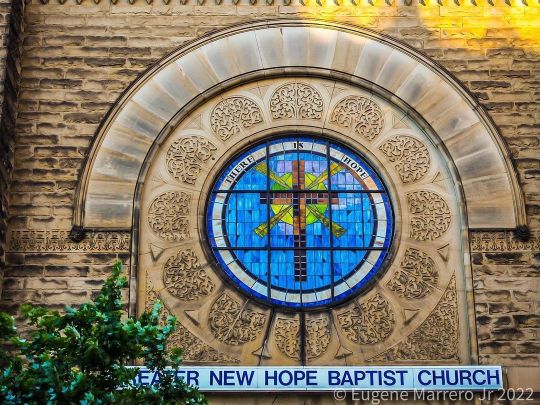
This is the front façade of the Greater New Hope Baptish Church in Washington DC. Established in 1933 as the New Hope Baptist Mission in Washington DC and congregated at various locations before permanently moving to this historic location on 8th Street Northwest DC near Chinatown in 1953. The beautiful temple had been a temple to the Washington Hebrew Congregation which was Washington DC’s oldest Jewish congregation formed and organized in 1852 associated with Reform Judaism mostly of German descent. This congregation dedicated this Hebrew 8th Street Temple in 1898 with US President William McKinley attending the groundbreaking ceremony of the temple that was loosely fashioned after the Berlin Synagogue (1866) and Dresden Synagogue (1840), the Dresden built by Gottfried Semper where one large central dome is flanked by two smaller pavilion domes flanking the central structure. The 8th Street Temple’s domes are no longer on the building and where central stained-glass with the Star of David was replaced with a beautiful stained-glass window with cross and the inscription “There is Hope” which is what this image has captured. - [ ] #developportdev @gothamtomato @developphotoweek @omsystem.cameras #excellent_america #omsystem @bheventspace - [ ] #developportdev @gothamtomato @developphotonewsletter @omsystem.cameras #excellent_america #omsystem @bhphoto @adorama @tamracphoto @tiffencompany #usaprimeshot @visitwashingtondc (at Chinatown (Washington, D.C.)) https://www.instagram.com/p/ClPTcKWS6rc/?igshid=NGJjMDIxMWI=
0 notes
Text
Ladrillo textil | Íñigo García Odiaga
En 1860, Gottfried Semper publicó su obra cumbre Der Stil, El Estilo, un texto en el que ligaba el origen primigenio de la arquitectura al origen de las técnicas textiles. Aquel hombre primitivo capaz de entrelazar tallos o fibras naturales, y alternarlos produciendo patrones en función de su textura o color, pasó fácilmente a trenzar ramas o cañas para construir cercados o pequeñas empalizadas. Según la teoría de Semper, bajo una tesis evolutiva similar a la elaborada por Charles Darwin, esos cerramientos textiles irían incorporando materiales más evolucionados como la madera, la piedra o la cerámica, pero manteniendo los patrones decorativos heredados de su origen textil.
[...]
0 notes
Photo

527 Every time I see shelters like this built on the beach I am reminded of Gottfried Semper and his theory... (professional deviation, I suppose!) Today incredible afternoon colors starting from an infinite rainbow placed in the middle of the Adriatic and then a purple palette that surrounds the Dolomites and the Pre-Alps, with Monte Cavallo (2,251 m) in the foreground (pitc 4). #brussa #gottfriedsemper #rainbow #searainbow #purplesunset #colnudocavallo #dolomitifriulane #dolomiti (presso Brussa Beach) https://www.instagram.com/p/ChkyIoaMZuU/?igshid=NGJjMDIxMWI=
0 notes
Text
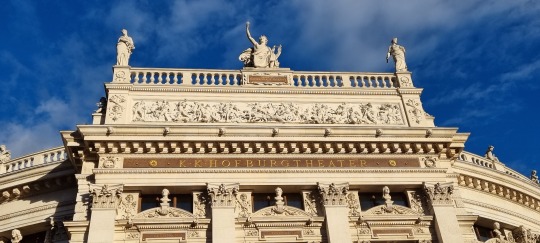
The upper part of the façade of the new building of the Vienna (Imperial) Court Theater from 1888. It was designed by Gottfried Semper (ground plan) and Karl Freiherr von Hasenauer (façade).
Der obere Teil der Fassade des Neubaus des Wiener (k. k. Hof-) Burgtheaters von 1888. Der Entwurf stammt von Gottfried Semper (Grundriss) und Karl Freiherr von Hasenauer (Fassade).
Верхняя часть фасада нового здания Венского (Императорского) придворного театра (Бургтеатра) 1888 года. Спроектировано Готфридом Земпером (план здания) и Карлом Фрайхерром фон Хазенауэром (фасад).
Partie supérieure de la façade du nouveau bâtiment du théâtre impérial de Vienne, datant de 1888. Il a été conçu par Gottfried Semper (plan) et Karl Freiherr von Hasenauer (façade).
#Imperial Court Theater#Burgtheater#Vienna#Austria#Бургтеатр#façade#Gottfried Semper#Karl Freiherr von Hasenauer#Fassade#Hofburgtheater#1888#Готфрид Земпер#Карл Фрайхерр фон Хазенауэр#Императорский придворный театр#théâtre impérial#фасад#Wien#Österreich#Вена#Австрия#Vienne#Autriche#Innere Stadt#Vídeň#Wiedeń#Bécs#Viedeň#Rakousko#1. Bezirk#1010 Wien
1 note
·
View note
Text
9.2.23
DAS ERZGEBIRGE FEST - DIGITAL Nº1
DAS ERZGEBIRGE FEST - DIGITAL
Staatskapelle Dresden in der Sächsischen Schweiz -
https://www.youtube.com/watch?v=W3T2dJwwiA8
Nº2Carolin Masur & Sächsische Staatsoper Dresden -
Stille Nacht, Heilige Na…
https://www.youtube.com/watch?v=wMtdPIFmL2o%C2%A0v%C3%ADa+YOUTUBE&feature=youtu.be
Nº3
Dresdner Kreuzchor - Weihnachtsoratorium (Johann Sebastian Bach)
https://youtu.be/cWKJFogshwg
vía @YouTube
Nº4
Der sächsische Bildhauer Johannes Schilling (* 23. Juni 1828 in Mittweida; † 21. März 1910 in Klotzsche bei Dresden) war ein deutscher Bildhauer.
https://de.wikipedia.org/wiki/Johannes_Schilling
Bildwerke
1861–1868:
Vier Tageszeiten von Johannes Schilling Brühlsche Terrasse, Theaterplatz…
https://www.youtube.com/watch?v=19LDRavq3cg%C2%A0v%C3%ADa+%40YouTube&feature=youtu.be
1891/92:
Semper-Denkmal auf der Brühlschen Terrasse in Dresden
https://de.wikipedia.org/wiki/Gottfried-Semper-Denkmal
Nº5
Matthias Grünewald (16. Jahrhundert)
https://de.wikipedia.org/wiki/Matthias_Gr%C3%BCnewald
Nº6
Der Sächsische Kunstverein
https://de.wikipedia.org/wiki/S%C3%A4chsischer_Kunstverein
Nº7 1-A)DIE MUSIK: NIEDERSACHSENJohann Joachim Quantz : DIE BIOGRAPHIE
(* 30. Januar 1697 in Scheden (Kurfürstentum Braunschweig-Lüneburg)
https://de.wikipedia.org/wiki/Johann_Joachim_Quantz
Johann Joachim QuantzTempo di Gavotta (Sonata 1 D-Major for flute+organ - Thomas Beie)
https://youtu.be/t1jUk_rIYCA
vía @YouTube“Gran Minuetto con Variazioni”
https://youtu.be/QDd-76cOGEI
vía @YouTube1- Grave - Sonata XIV en sol menor
https://youtu.be/RbaOCR1ewsI
vía @YouTubeFlute Concertos
https://youtu.be/XubfFd0nkoI
vía @YouTubeLudwig Spohr: DIE BIOGRAPHIE
https://de.wikipedia.org/wiki/Louis_Spohr
Ludwig SpohrMesse in c-moll, op. 54
https://youtu.be/yuYfDWcBHbE
vía @YouTubeDuo for Violin and Viola in E minor
https://youtu.be/wXsKmUd0H8U
vía @YouTubeSonata para violín y arpa en do menor. II. Andante-Allegro
https://youtu.be/VXM8d_FFhfM
vía @YouTubeSymphony Nº9,Op.143(1850)“The Seasons”
https://youtu.be/LFUIR3h-fcg
vía @YouTube“The Last Judgement” - Heilig ist Gott der Herr /…
https://youtu.be/9IsUNiOJ0UU
vía @YouTube1-B)
DIE MUSIK: SACHSEN
Johann Gottlieb Naumann: DIE BIOGRAPHIE
(* 17. April 1741 in Blasewitz; † 23. Oktober 1801 in Dresden)
https://de.wikipedia.org/wiki/Johann_Gottlieb_Naumann
Johann Gottlieb NaumannSinfonia I. D-Dur
https://youtu.be/no_i5JDOtWQ
vía @YouTubeKommt herzu (Kantate)
https://youtu.be/HcyGy4922fI
vía @YouTubePsalm - Singet dem Herrn ein neues Lied
https://youtu.be/b9RZiM484IU
vía @YouTubeTe Deum
https://youtu.be/JjR19SBaDOs
vía @YouTubeMissa No.18 in D-minor (1794)
https://youtu.be/qPmrq7P98cs
vía @YouTubeDIE BIOGRAPHIE: Heinrich August Marschner
https://de.wikipedia.org/wiki/Heinrich_Marschner
Heinrich August Marschner»Der Morgentau« (Op. 87 Nr. 2)
https://youtu.be/MID5ft4EUyo
vía @YouTubeJohann Paul von Westhoff: DIE BIOGRAPHIE
(* 1656 in Dresden; begraben 17. April 1705 in Weimar)
http://www.radioswissjazz.ch/de/musikdatenbank/musiker/254974fa2b577a3dbe733ba3b930a3b1c89289/biography
Allemande & Courante from the A major suite for solo violin
https://youtu.be/2YtNbH3hn1A
vía @YouTubeSuites for Solo Violin (Kolja Lessing)
https://youtu.be/34iZsGgufmg
vía @YouTube6 Sonates for Violin et Basso Continuo
https://youtu.be/DOIRJoHnZYQ
vía @YouTube1-C)
DIE MUSIK: SACHSEN - ANHALTJohann Gottfried Reiche: DIE BIOGRAPHIE
(* 5. Februar 1667 in Weißenfels; † 6. Oktober 1734 in Leipzig)
https://de.wikipedia.org/wiki/Gottfried_Reiche
Johann Gottfried Reiche
Abblasen
https://youtu.be/483AdTgZP14
vía @YouTubeFuga - Posaunenchor Hochstadt
https://youtu.be/nGzpXeXcrwg
vía @YouTube1. Sonatina aus “Turmsonaten”
https://youtu.be/vT6bJ_o0C2A
vía @YouTubeGeorg Philipp Telemann: DIE BIOGRAPHIE
(14. März 1681 - 25. Juni 1767)
http://www.klassikakzente.de/georg-philipp-telemann/biografie
20 little Fugues for Organ TWV 30:1-20, Franz Loerch Organ
https://youtu.be/W8PzwLUyKe4
vía @YouTubeConcert for trumpet and organ in D
https://youtu.be/WQiRPvGy5Yo
vía @YouTubeDIE TAGESZEITEN
https://youtu.be/WZWEN_7B63s
vía @YouTubeMatthaus Passion
https://youtu.be/ZPkh7vyUht8
vía @YouTube1-D)
DIE MUSIK: THÜRINGEN
Heinrich Schütz: DIE BIOGRAPHIE
https://de.wikipedia.org/wiki/Heinrich_Sch%C3%BCtz
Heinrich Schütz
Symphoniae Sacrae I
https://youtu.be/KJlpATkd5B0
vía @YouTubeSymphoniae Sacrae II
https://youtu.be/u-qYLruhPXM
vía @YouTubeJohann Sebastian Bach: DIE BIOGRAPHIE
http://www.klassika.info/Komponisten/Bach/lebenslauf_1.html
Magnificat in D major, BWV 243 - Harnoncourt
https://youtu.be/Vr5cKdC3v3E
vía @YouTubeJ.S.Bach-Toccata e Fuga BWV 565-Karl Richter
https://youtu.be/Zd_oIFy1mxM
vía @YouTubeHallelujah
https://youtu.be/0S6Tjvaj19Q
vía @YouTube2)Die Ornithologie
Johann Friedrich Naumann (SACHSEN -ANHALT)
https://de.wikipedia.org/wiki/Johann_Friedrich_Naumann
Johann Andreas Naumann (SACHSEN -ANHALT)
(* 13. April 1744 in Ziebigk bei Köthen; † 15. Mai 1826 ebenda)
https://de.wikipedia.org/wiki/Johann_Andreas_Naumann
Der König von Sachsen Vogel-Paradies (Pteridophora Alberti)
King-of-Saxony Bird-of-Paradise (Pteridophora Alberti)
(Adolf Bernhard Meyer (11 October 1840,
Hamburg – 22 August 1911, Dresden))
https://youtu.be/MdNyeasi0GI
vía @YouTube2-A
Semper, Gottfried
http://www.deutsche-biographie.de/sfz80027.html
Nº8
Stollen (Gebäck)
https://de.wikipedia.org/wiki/Stollen_
(Gebäck)
Nº9
Weihnachten in Dresden – Typisch sächsische Traditionen
https://storify.com/reisen_online/weihnachten-in-dresden-typisch-sachsische-traditio…
Nº10
Traditionelles Handwerk
http://www.poststrassen-erleben.de/…/traditionelles-handwer…

1 note
·
View note
Text
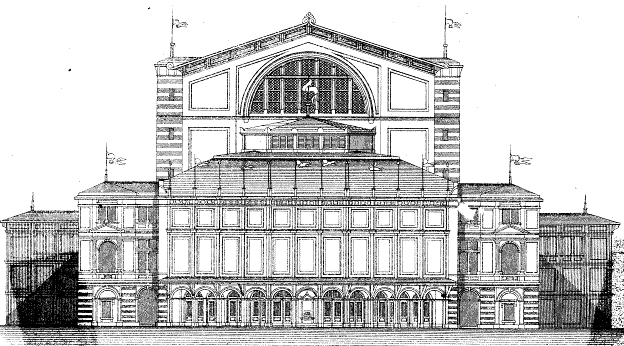
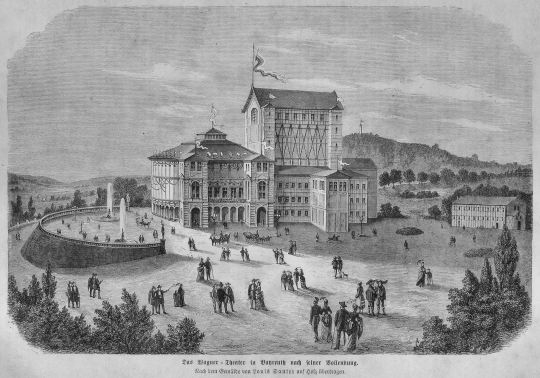

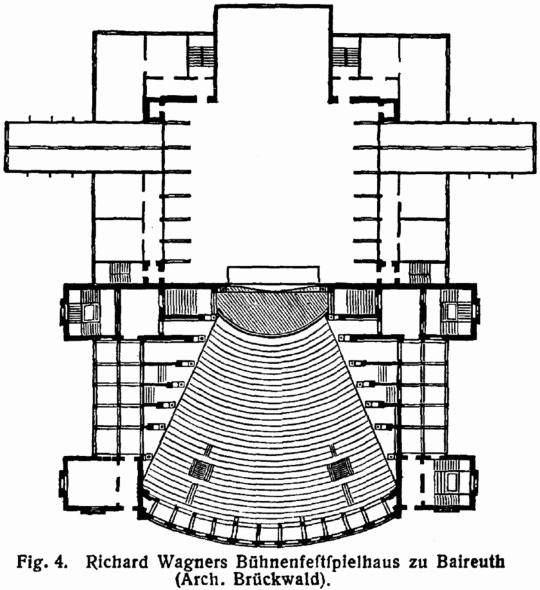

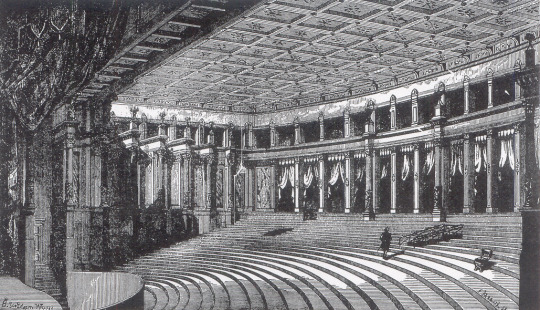
Bayreuth festival theatre
Bayreuth, Germany
1872–1876
Gottfried Semper (1803–1879)
Richard Wagner (1813–1883)
#gottfried semper#richard wagner#bayreuth#germany#europe#1870s#19th century#architecture#theatre#enfilade#wall#untagged
4 notes
·
View notes
Photo


KUNSTHISTORISCHES MUSEUM WIEN
MUSEUM OF FINE ARTS VIENNA
Errichtet zwischen 1871 und 1891 nach den Plänen
von Gottfried Semper und Baron Karl von Hasenauer
Built between 1871 and 1891 according to plans drawn up
by Gottfried SEMPER and Baron Karl von HASENAUER
#kunsthistorisches museum#vienna 1900#wien 1900#khm#gottfried semper#karl von hasenauer#vienna ringstrasse#wiener ringstrasse#semper#hasenauer#vienna#wien#vienne 1900#viena 1900
9 notes
·
View notes
Text
書摘-11
“Along with the resplendent marvels of the stars, the night sky displays faintly shimmering mists or nebulae, which leave us in some doubt whether they are old systems bereft of their central focus and dispersing into space, or cosmic vapors taking shape around a nucleus, or both together. This phenomenon has an analogy in certain mysterious nebulae that appear in the visual field of art history: states of the disintegration of monumental art, in which the elements of the microcosmic creation flow back into the bosom of universal and undifferentiated being. Along with them, new artistic forms slowly prepare to emerge from the chaos of ruined artistic worlds and then suddenly and unexpectedly cohere, in the moment of genesis, around a new nucleus of relationships.”
____ Gottfried Semper
1 note
·
View note
